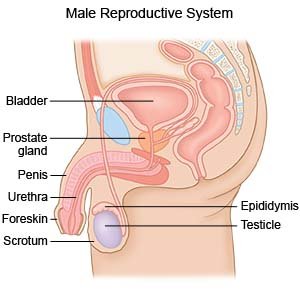Perineal Prostatectomy
Medically reviewed by Drugs.com. Last updated on Aug 4, 2025.
A perineal prostatectomy is surgery to remove your prostate gland.
 |
WHILE YOU ARE HERE:
Before your surgery:
- Informed consent is a legal document that explains the tests, treatments, or procedures that you may need. Informed consent means you understand what will be done and can make decisions about what you want. You give your permission when you sign the consent form. You can have someone sign this form for you if you are not able to sign it. You have the right to understand your medical care in words you know. Before you sign the consent form, understand the risks and benefits of what will be done. Make sure all your questions are answered.
- An IV will be placed into a vein. You may be given medicine or liquid through the IV.
- Pressure stockings may be placed on your legs to help prevent blood clots.
- An enema is given to help clean out your bowel.
- Antibiotics are given to help prevent a bacterial infection.
- Anesthesia is medicine to make you comfortable during the surgery. Healthcare providers will work with you to decide which anesthesia is best for you:
- General anesthesia will keep you asleep and free from pain during surgery. Anesthesia may be given through your IV. You may instead breathe it in through a mask or a tube placed down your throat. The tube may cause you to have a sore throat when you wake up.
- Regional anesthesia is injected to numb the area where the surgery will be done.
During your surgery:
Your surgeon will make an incision between your scrotum and anus. He or she will separate your prostate gland from your urethra. He or she will attach your bladder to your urethra and place a catheter to drain urine. Your surgeon may make another incision in your abdomen and remove lymph nodes. The incision will be closed with stitches and covered with a bandage. Your prostate gland will be sent to a lab for testing.
Related medications
After your surgery:
You will be taken to a room to rest until you are fully awake. You will be monitored closely for any problems. Do not get out of bed until your healthcare provider says it is okay. You will then be taken to your hospital room.
- Medicines may be given to relieve pain or prevent constipation.
- Healthcare providers may help you get out of bed to walk on the day after your surgery. Ask if there are exercises you can do in bed. Exercise helps blood move through your body and may help prevent blood clots. Call for a healthcare provider before you get out of bed for the first time. If you feel weak or dizzy while standing up, sit or lie down right away and call for a healthcare provider.
- A Foley catheter will drain and collect your urine. Keep the bag of urine below your waist and do not let the tubing kink. This will help prevent an infection. Do not pull on the catheter. This could cause pain and discomfort.
- A drain will be placed to remove blood and fluid. The drain will be removed when it is no longer needed.
RISKS:
Surgery may increase your risk for bleeding or an infection. Nerves, organs, or tissues near your prostate may be injured during surgery. After surgery, you may leak urine and bowel movements. Urine leakage may be short-term or permanent. You may have trouble having an erection or ejaculating. You may get a blood clot in your leg. This may become life-threatening.
CARE AGREEMENT:
You have the right to help plan your care. Learn about your health condition and how it may be treated. Discuss treatment options with your healthcare providers to decide what care you want to receive. You always have the right to refuse treatment.© Copyright Merative 2025 Information is for End User's use only and may not be sold, redistributed or otherwise used for commercial purposes.
The above information is an educational aid only. It is not intended as medical advice for individual conditions or treatments. Talk to your doctor, nurse or pharmacist before following any medical regimen to see if it is safe and effective for you.
Learn more about Perineal Prostatectomy
Care guides
Further information
Always consult your healthcare provider to ensure the information displayed on this page applies to your personal circumstances.
